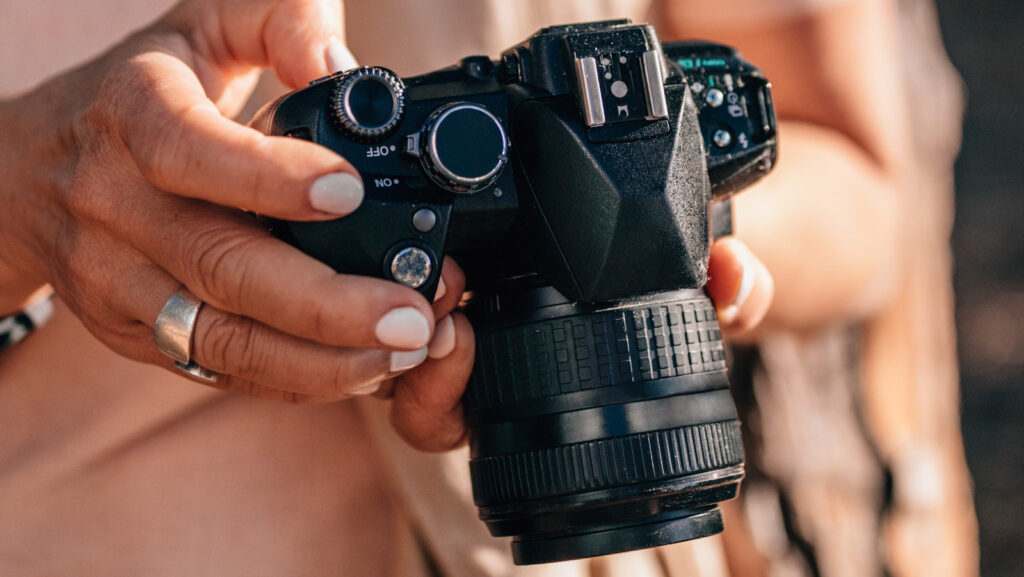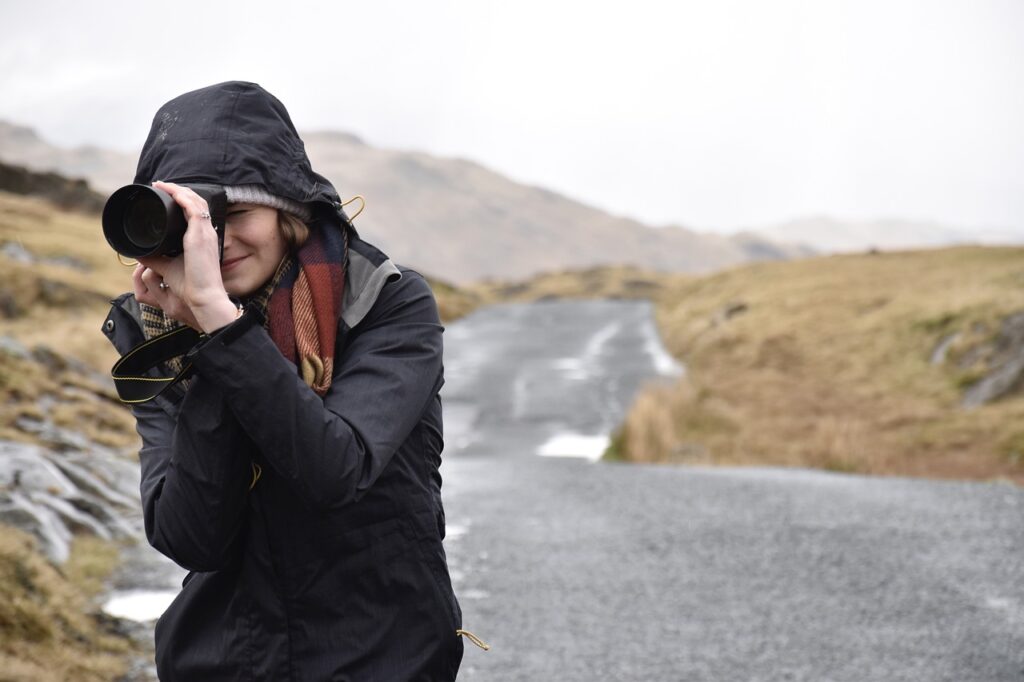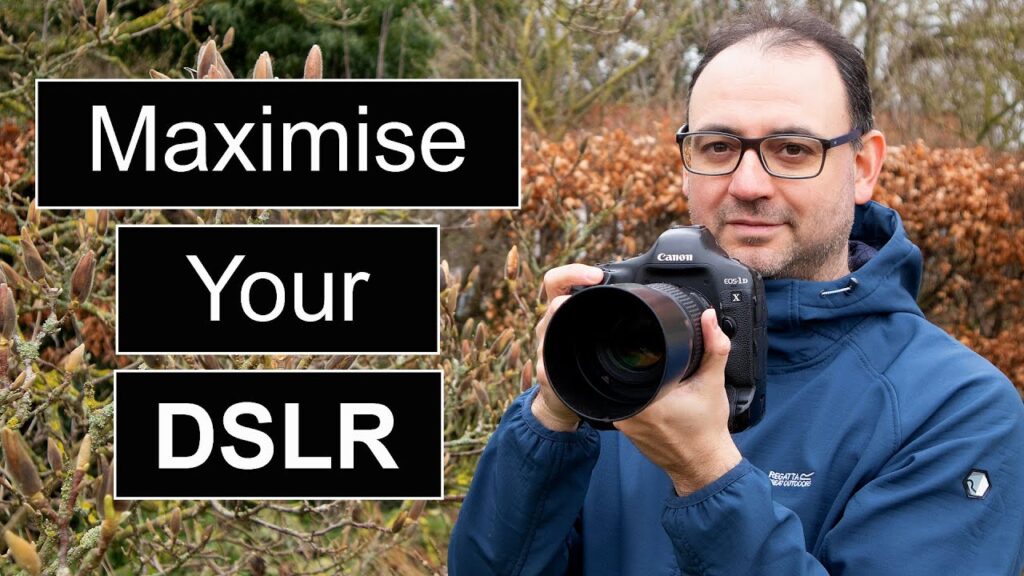Looking to take your photography skills to the next level with a DSLR camera? Look no further! In this article, we’ll share five invaluable tips that will help you improve your photography game. First, we’ll delve into the importance of understanding exposure and how adjusting settings like aperture, shutter speed, and ISO can make a dramatic difference in your photos. Then, we’ll explore the world of composition, with techniques like the rule of thirds, leading lines, and framing. We’ll also guide you on how to master manual mode for complete control over your camera settings. Additionally, we’ll highlight the significance of using natural light and suggest the best times to capture soft, warm lighting. Lastly, we’ll encourage you to keep practicing and experimenting with different techniques to find your unique photography style. So, immerse yourself in this creative journey, embrace your mistakes, and get ready to elevate your photography skills to new heights!

Understand Exposure
Exposure is one of the most fundamental aspects of photography. It refers to the amount of light that enters the camera and affects how light or dark your photos appear. To improve your photography skills, it’s essential to understand the exposure triangle, which consists of aperture, shutter speed, and ISO.
Aperture
Aperture refers to the size of the opening in the camera lens through which light passes. It is measured in f-stops, with smaller numbers representing a larger aperture and vice versa. By adjusting the aperture, you can control the depth of field, which determines how much of the image is in focus. A larger aperture (small f-number) creates a shallow depth of field, blurring the background and making the subject stand out. On the other hand, a smaller aperture (large f-number) increases the depth of field, resulting in more of the image being in focus.
Shutter Speed
Shutter speed refers to the length of time the camera’s shutter remains open to expose the image sensor to light. It is measured in fractions of a second, such as 1/500, 1/100, or 1/10. Fast shutter speeds freeze motion, which is ideal for capturing sports or wildlife. Conversely, slow shutter speeds create motion blur, adding a sense of movement to your photos. By experimenting with different shutter speeds, you can convey motion or freeze action, depending on the effect you want to achieve.
ISO
ISO measures the sensitivity of the camera’s image sensor to light. A lower ISO, such as 100 or 200, is less sensitive and produces cleaner, less grainy images. On the other hand, a higher ISO, such as 800 or 1600, is more sensitive and allows you to capture images in low-light conditions. However, with higher ISO settings, you are more likely to encounter digital noise or graininess in your photos. It’s important to find the right balance between ISO and shutter speed to achieve optimal exposure without compromising image quality.
By mastering the exposure triangle, you can have full control over the exposure settings of your DSLR camera. Understanding how aperture, shutter speed, and ISO interact with each other will enable you to capture well-exposed and visually appealing photographs.
Composition Matters
Composition plays a vital role in creating visually appealing and impactful photographs. It involves arranging elements within the frame in a way that draws the viewer’s eye and tells a story. To improve your composition skills, here are some tips to keep in mind:
Rule of Thirds
The rule of thirds is a classic composition technique that divides the frame into a grid of nine equal parts, with two horizontal and two vertical lines intersecting. The key elements of your photo should be placed along these lines or at their intersections, known as the “points of interest.” This helps create a sense of balance and visual harmony in your composition, making it more pleasing to the eye.
Leading Lines
Leading lines are lines that lead the viewer’s eye from one part of the image to another, creating a sense of depth and guiding their gaze. They can be actual lines, such as roads or fences, or implied lines created by the arrangement of elements within the frame. By incorporating leading lines into your composition, you can create a more dynamic and engaging image.
Framing
Framing involves using elements within the scene to create a frame within the frame, drawing attention to the subject. It can be done by using natural elements like trees or windows, or even by using man-made objects like doorways or arches. This technique adds depth and context to your photos, giving them a unique and artistic touch.
In addition to these techniques, don’t be afraid to experiment with different angles and perspectives. Try shooting from a low angle or a high vantage point to add a new dimension to your photographs. By practicing composition techniques and exploring different perspectives, you can enhance the visual impact of your images and create photos that truly stand out.

Master Manual Mode
While it may be tempting to rely on auto mode to capture quick shots, transitioning to manual mode can significantly improve your photography skills. In manual mode, you have full control over the settings, allowing you to capture shots exactly as you envision them. Here’s why mastering manual mode is important:
Full Control Over Settings
In auto mode, the camera makes all the decisions regarding exposure settings, which may not always result in the desired outcome. By switching to manual mode, you can take control of aperture, shutter speed, and ISO individually, giving you the power to fine-tune your settings to achieve the desired exposure and creative effect. This level of control is crucial in situations where the lighting conditions are challenging or when you want to experiment with specific techniques.
Creative Flexibility
With manual mode, you can push the boundaries of your creativity and capture images that reflect your unique vision. By adjusting the exposure settings to your liking, you can experiment with different styles, moods, and effects. Whether you want to create a dreamy long exposure, a dramatic silhouette, or a perfectly exposed landscape, manual mode allows you to bring your ideas to life.
Transitioning from auto mode to manual mode may initially seem daunting, but with practice, it becomes second nature. Take your time to understand the relationship between aperture, shutter speed, and ISO, and experiment with different combinations to see how they affect your images. Along the way, you’ll gain confidence in your ability to capture photos that truly represent your artistic vision.
Use Natural Light
Lighting plays a crucial role in photography, and natural light can be your best friend when it comes to capturing beautiful and flattering images. Here are some reasons why utilizing natural light can enhance your photography:
Soft, Warm Lighting
The early mornings and late afternoons, known as the golden hours, offer soft, warm lighting that can make your subjects look magnificent. During these times, the sun is lower in the sky, creating a beautiful, diffused light that adds a glow to your images. The softness of the light during golden hour minimizes harsh shadows and highlights, resulting in a more pleasing and balanced exposure.
Natural Light as a Subject
In addition to using natural light to illuminate your subjects, you can also make natural light the focus of your photos. Whether it’s photographing a stunning sunset, capturing the play of light through leaves, or using window light to create soft portraits, experimenting with natural light can result in captivating and ethereal images.
Utilizing natural light requires an understanding of how it behaves at different times of the day and in various weather conditions. Take the time to study the quality and direction of light and how it affects your subjects. By learning to work with natural light, you can capture photographs that have a natural and authentic feel.

Practice and Experiment
Photography, like any other skill, can only be improved through practice. Keep practicing and trying new techniques to refine your skills and develop your unique style. Here are some tips to help you on your photographic journey:
Trying New Techniques
Don’t be afraid to step out of your comfort zone and try new techniques. Experiment with different settings, lenses, and post-processing techniques. From long exposures to macro photography, there’s a vast array of techniques waiting to be explored. By stepping outside of your usual style and trying new things, you’ll push the boundaries of your creativity and discover new ways to express yourself through your photographs.
Learn from Mistakes
Photography is a journey, and along the way, you’re likely to make mistakes. Embrace these mistakes as opportunities to learn and grow. Review your images critically, identify areas for improvement, and try to figure out what went wrong. By analyzing your mistakes, you can learn valuable lessons and avoid making the same errors in the future.
Remember, there is no definitive right or wrong in photography. It’s all about experimenting, learning, and finding what works best for you. Embrace the process of trial and error, and let your creativity flourish.
Focus on Composition
Composition is key to creating visually appealing and impactful photographs. While we’ve already touched on some composition techniques, here are some additional tips to help you achieve balance and harmony in your composition:
Pay Attention to Elements
When framing your shot, pay careful attention to the elements you include in the frame. Remove any distractions that may take away from the primary subject. Simplify the composition by eliminating clutter and focusing on what is essential. By carefully selecting and arranging elements, you can create a composition that is visually pleasing and draws attention to your subject.
Balance and Harmony
A well-composed photograph should have a sense of balance and harmony. Consider the placement and distribution of visual elements within the frame. You can achieve this through the rule of thirds, as mentioned earlier, or by creating symmetry, leading lines, or patterns. By consciously seeking balance and harmony in your composition, you can create visually striking images.
Mastering composition takes time and practice. Explore different compositions, experiment with different perspectives, and continually assess your images for areas of improvement. With persistence and an open mind, you’ll develop a keen eye for composition and elevate your photography to new heights.

Master Depth of Field
Depth of field refers to the area in your photograph that appears sharp and in focus. Mastering depth of field can greatly enhance the visual impact of your images and help you tell a more compelling story. Here’s how you can achieve different depths of field:
Aperture and Depth of Field
As mentioned earlier, aperture plays a significant role in determining the depth of field in your photographs. A larger aperture (small f-number) results in a shallow depth of field, where only a small portion of the image is in focus. This technique is often used in portrait photography, where the subject is sharp against a blurred background, creating separation and emphasis. On the other hand, using a smaller aperture (large f-number) increases the depth of field, resulting in more elements in the image being in focus. This is commonly used in landscape photography, where both the foreground and background are in sharp focus.
Experiment with different aperture settings and pay attention to how they affect the depth of field in your images. By understanding and controlling depth of field, you can guide the viewer’s attention and create a visual hierarchy within your photographs.
Utilize the Rule of Thirds
The rule of thirds is an effective compositional guideline that can significantly improve the overall balance and aesthetic appeal of your photos. By dividing the frame into three equal sections both horizontally and vertically, you create a grid with four intersecting lines. The key elements in your composition should ideally be placed along these lines or at their intersections.
Points of Interest
Placing your subject or other prominent elements along the lines or intersections of the rule of thirds grid creates points of interest that draw the viewer’s attention. This technique adds visual dynamism to your photographs and helps create a sense of harmony and balance.
Negative Space
In addition to placing subjects along the lines or intersections, the rule of thirds also encourages the use of negative space. Negative space refers to the empty or less occupied areas in a composition. By leaving significant areas of the frame empty, you allow the viewer’s eyes to rest and create a visual balance between the subject and the surrounding space. Negative space can add a sense of depth and minimalism to your images, allowing the subject to stand out even more.
Remember, the rule of thirds is not a strict rule, but rather a guideline that can help you achieve balance and visual appeal in your compositions. Experiment with different placements and see how they affect the overall composition and impact of your photos.

Capture Movement
Photography has the power to freeze a single moment in time, but it can also convey a sense of movement and action. To capture dynamic and engaging photos, here are some techniques to try:
Slow Shutter Speeds
Using slow shutter speeds allows you to introduce motion blur into your photos. This technique is commonly used in capturing flowing water, car light trails, or any subject in motion. By selecting a slow shutter speed and keeping the camera steady, the moving subject will appear blurred, while the stationary elements remain sharp. Experiment with different shutter speeds to achieve the desired amount of motion blur and convey the sense of movement you desire.
Panning Technique
Panning is a technique where you track a moving subject with a slow shutter speed, creating a sharp subject against a blurred background. To achieve this effect, choose a slower shutter speed and follow the subject’s movement with your camera while pressing the shutter button. Panning works particularly well for capturing fast-moving subjects such as cars, cyclists, or animals. With practice, you can achieve compelling images that capture the energy and excitement of the scene.
By experimenting with capturing movement, you can add a dynamic and energetic quality to your photographs. Whether you freeze motion or create beautiful, flowing blur, these techniques can bring your images to life and tell a more engaging story.
Post-Processing Tips
Once you’ve captured your photos, post-processing can further enhance their visual impact and make them truly shine. Here are some essential post-processing tips to consider:
Basic Editing Techniques
Start by mastering the basic editing techniques, such as adjusting exposure, contrast, and white balance. These adjustments allow you to fine-tune the overall tone and mood of your images. You can also correct any exposure or color casts that occurred during shooting.
Color Enhancements
Experiment with color adjustments to make your images pop. Enhance the vibrancy or saturation of certain colors to create a more visually striking image. However, it’s important to strike a balance and avoid over-processing, which can result in unrealistic or unnatural-looking images.
Sharpening
Applying selective sharpening can help bring out the details in your photographs and make them appear crisper. Be careful not to oversharpen, as it can introduce digital artifacts or noise into your images. Use sharpening sparingly and selectively to retain a natural and pleasing aesthetic.
Post-processing is a creative tool that allows you to fine-tune your images and add your personal touch. However, it’s important to remember that post-processing should complement and enhance your photos rather than compensate for poor composition or exposure. Strive for a balance between enhancing your images and maintaining their authenticity.
In conclusion, improving your photography skills with a DSLR camera requires a combination of technical knowledge, composition techniques, and a willingness to experiment. Understanding the exposure triangle and mastering manual mode will give you full control over your camera’s settings, while paying attention to composition and natural light will help you create visually appealing photographs. Remember to practice regularly, embrace mistakes as learning opportunities, and stay open to new techniques and ideas. With time and dedication, your photography skills will continue to grow, and your unique style will emerge. So grab your camera, go out and explore, and let your creativity shine through your photographs!
